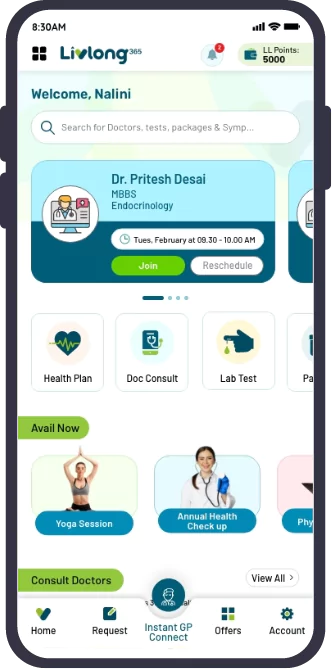What Is Chikungunya Disease?
The chikungunya virus is transmitted in humans through an infected mosquito’s bite. The resultant disease’s symptoms are fever as well as joint pain. Although it is rarely fatal, the manifestations can be intense, painful, long-lasting, and sometimes even briefly incapacitating.
Chikungunya disease is spread when an adult female Aedes aegypti or Aedes albopictus mosquito feeds on the blood of a person already afflicted with this virus. The mosquito gets infected and then moves on to its next prey and deposits the virus in its system.
Almost everyone who gets bit by a chikungunya mosquito will be symptomatic. The clinical signs are often severe, but with proper medical care they can subside within a week or so. Besides fever and joint pain, people can also experience rashes, nausea and vomiting, headaches, muscle pain, joint swelling, and eye pain. Joint pain is possible even months after recovery.
Complications are possible but the ones who are most vulnerable to them are pregnant people in the last month of their pregnancy, new-borns and young children, people with medical issues like high blood pressure and diabetes, and geriatrics (anyone above the age of 65 years). Death from chikungunya is rare, but it has been recorded. The possibility of contracting the disease is high if you have a weak immune system and if you have any underlying medical conditions.
The symptoms of chikungunya can be mistaken for the symptoms of dengue and malaria too. The symptoms usually appear a few days after the mosquito has bitten a person. So, for a definitive diagnosis, a reverse transcription polymerase chain reaction (RT-PCR) test and an antibody test are needed to check for the virus’s presence in the body. It’s also important to quickly pinpoint whether there is dengue or chikungunya because the former can be life-threatening.
Even though chikungunya is found in almost 100 countries across Africa, Asia, Europe, the Indian and Pacific Oceans, the Caribbean, and Central and South America, there is no specific vaccine or anti-viral drug to cure this disease. The treatment course usually focuses on pain relief and fever reduction for both adults and children. So, you will be prescribed over-the-counter non-aspirin medicines like paracetamol for both these issues of pain and fever. If there are other symptoms like rashes, you will be prescribed nonsteroidal anti-inflammatory drugs and soothing topical creams. If you are already taking medication for another health condition, do notify your doctor.
Besides ample rest and drug therapy, you will be advised to be careful of your diet. If you have a caregiver, they will also be briefed about the dos and don’ts to speed up your recovery, like being mindful of your diet.
Knowing preventive measures of chikungunya is also essential. Sleeping under a mosquito net and using insect repellent, anti-mosquito creams, as well as machines are important as well. You can also put screens over your windows and doors so that mosquitos and other bugs do not enter your house. Patching up any holes in the screens and mesh should also be a priority.
Diet for Chikungunya Patients
You will be asked to prioritise hydration because fever can cause a loss of fluids. So, drinking at least 6–8 glasses of water is essential. You can also complete your hydration quota by drinking fruit juices, tea, coffee, coconut water, soups, yoghurt-based drinks, and oral rehydration solution. Children should constantly sip on fluids throughout the day.
Diet for a chikungunya patient should have a good balance of all important vitamins, minerals, and essential nutrients. Because you are on the road to recovery and your body is weak, having three nutrient-dense meals will be helpful in getting your strength back. Fever can cause your appetite to decrease, so going for warm soups can give you the nutrition you need.
Referring to a nutritionist or a dietician can help give you clarity about how you should move ahead with your dietary needs. They can draw up a chikungunya diet chart that includes the exact portions of carbohydrates, protein, vitamins, minerals, fats, iron, and sodium you might need. They can also give you cooking tips, how to grocery shop effectively, and recipes.
Food for chikungunya recovery should also include fresh fruits because they have an abundance of antioxidants. Whole fruits and fresh juices should be a part of your chikungunya diet. Include foods that are rich in Omega-3 fatty acids like nuts, fish, seeds like flax and chia, as well as supplements. You can also take Vitamin C supplements but also include berries and citrus fruits in the diet.
Herbs also have a lot of good, healing qualities. You can add them to your food or brew teas out of them. Cumin seeds, fennel, ashwagandha, giloy, and ajwain are all known to bring warmth and have a soothing effect on the body. Caffeine can be consumed but too much of it can bring more harm than good.
Foods to avoid in chikungunya are:
- Products high in sugar, processed foods, junk, and take out
- Sugary and aerated beverages
- Red meat (go for white meat instead)
Fried foods are tasty, and you might want to indulge, but do try to avoid them while you are recovering. Alcohol and smoking should be strictly avoided.








